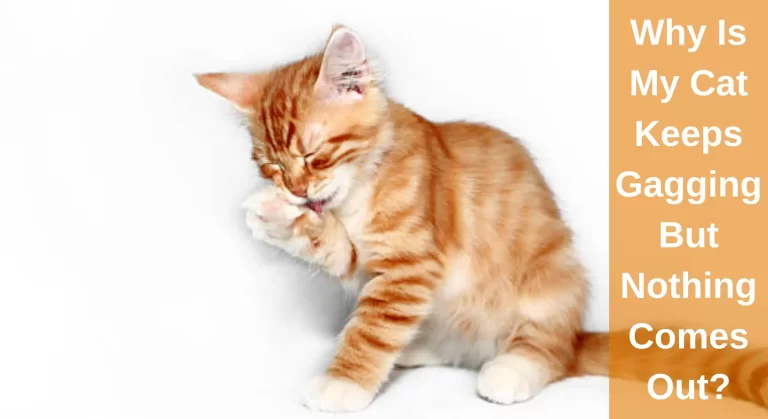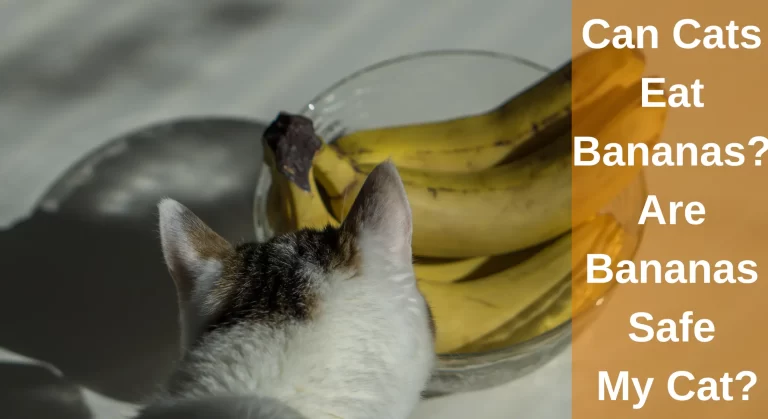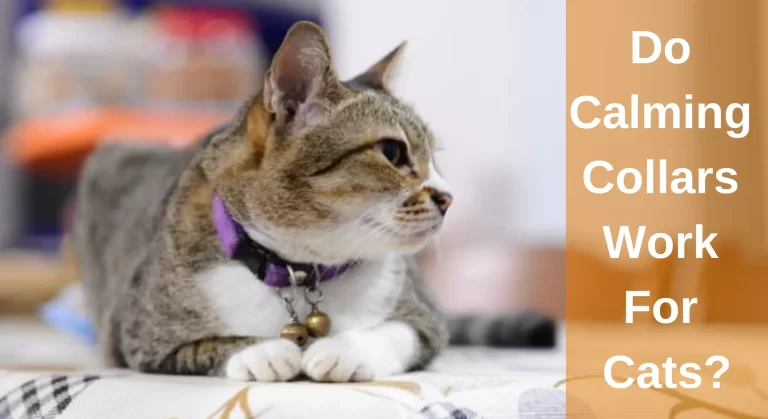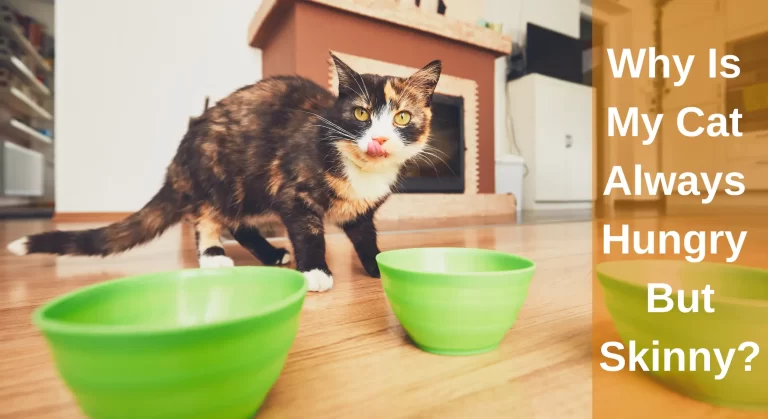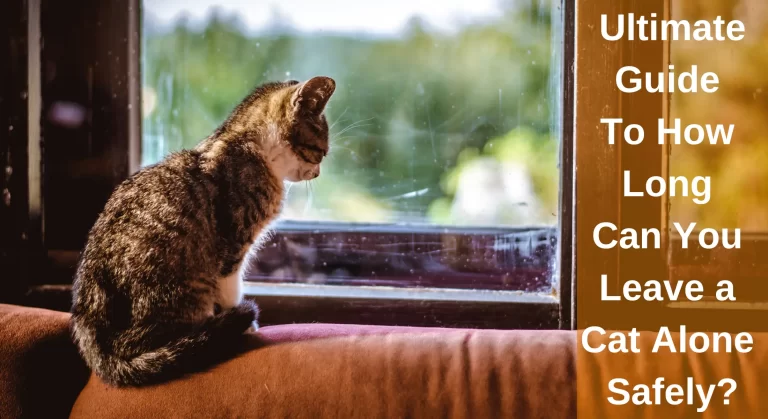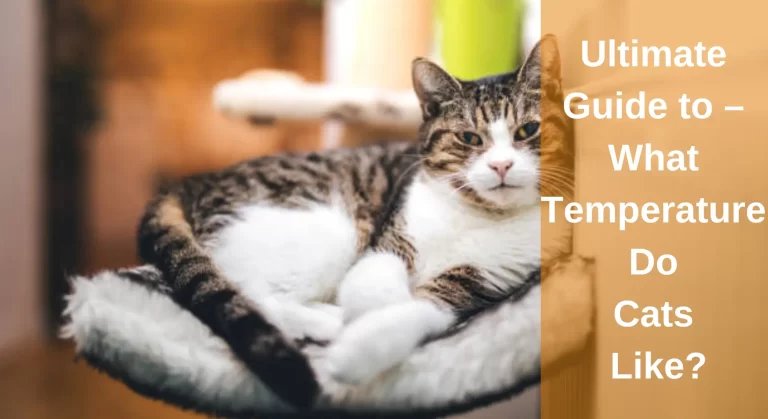Can You Use Human Eye Drops on Cats? Are Human Eye Drops Safe for Cats?
Our cats mean everything to us, so naturally, we would want them in tip-top shape. Sometimes, just like humans, cats can develop eye diseases. You may be tempted to pull out a bottle of your eye drops from the fridge to use on your cat, but is it such a good idea? Can You Use Human Eye Drops on Cats
Other than artificial tears, human eye drops should never be used for cats. Human eye drops are specifically formulated for humans and may contain chemicals that are not safe for pets. Using human eye drops on cats may do more harm than good.
It’s important to understand the risks and potential harm that can come from using the wrong eye drops on your cat. This article is all about different types of cat eye ailments, what you can do to treat them and when it is vital to see a vet.

Human Eye Drops vs Cat Eye Drops
While it may appear to be a straightforward solution to alleviate your feline’s eye issues with human eye drops, it’s not recommended. Human eye drops are intended for human use and contain ingredients that could pose a threat to cats. Some of these ingredients may cause agitation, pain, and in extreme cases, blindness in cats.
Human eye drops are developed to alleviate various eye conditions in humans, including dry eyes, redness, and itchiness. These eye drops possess functional ingredients that work to mitigate inflammation and discomfort in the eyes.
However, cat eye drops are specifically formulated for cats and are composed of ingredients that are safe and effective for feline eye use.
Administering human eye drops to cats is potentially hazardous since the active ingredients in these drops may not be suitable for cats. For instance, some human eye drops may include preservatives that are safe for humans but could be harmful to cats.
Find Out: Why Does My Cat Blink One Eye?
Can You Use Human Eye Drops on Cats? Is It Safe?
Before determining if human eye drops are okay to use for your cat, we need to discuss the different types of eyedrops out there:
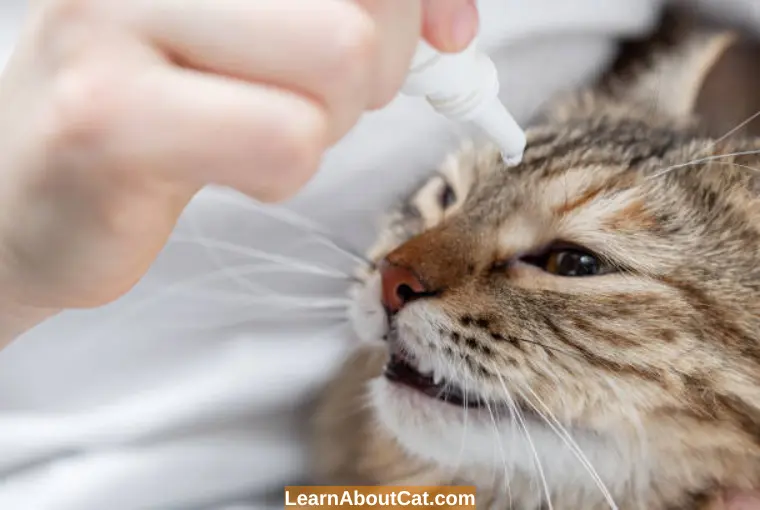
- Artificial Tears: Artificial tears contain chemical compounds that mimic the composition of natural tears. They have a similar pH to the pH of human and cat tears. They are instilled to lubricate the eyes and preserve their moisture levels.
- Anti-Allergy Drops: Anti-allergy drops contain an antihistamine solution that reduces the amount of histamine produced during an allergic reaction. They are effective in reducing redness, itchiness, and watery eyes.
- Anti-Redness Drops: Anti-redness drops contain a steroid solution that works by reducing the diameter of blood vessels in the eye. This reduced blood flow decreases the red appearance of the eye.
The only drops that are safe to use for your cat are artificial tears. Because human and cat tears have very similar pH and composition, they are harmless for felines.
Anti-allergy and anti-redness drops should never be for a feline’s eyes. They have not been tested on cats and can significantly aggravate your cat’s itchy, watery eyes and can cause life-threatening reactions.
Even products with antihistamines can contain a higher concentration of the compound, which can be harmful to cats.
Before putting anything in your cat’s eyes, it is best to consult your veterinarian.
Dangers of Using Human Eye Drops on Cats
Using human eye drops on cats can cause a range of adverse effects, including:
Possible Adverse Effects
- Swelling and inflammation of the eye
- Increased redness and itchiness
- Increased discharge from the eye
- Irritation and discomfort in the eye
The Risk of Overdosing
Using human eye drops on cats can also increase the risk of overdosing, which can cause severe health problems. Overdosing on eye drops can lead to vomiting, diarrhoea, lethargy, and even seizures.
Long-term Damage to the Eyes
Repeated use of human eye drops on cats can cause long-term damage to the eyes, including corneal ulcers, scarring, and even blindness.
Alternatives to Human Eye Drops for Cats
The best way to treat eye problems in cats is to use cat-specific eye drops that are designed to be safe and effective for feline eyes. These eye drops contain ingredients that are safe for cats and work to alleviate a range of eye problems.
Additionally, there are natural remedies for cats’ eyes, such as chamomile tea and warm compresses, that can help soothe and alleviate eye problems in cats.
Different Types of Eye Drops for Cats
There are various types of eye drops available for cats, including antibiotics, antifungal, and anti-inflammatory eye drops.
Antibiotic eye drops are commonly prescribed for bacterial infections, while antifungal drops are used for fungal infections.
Anti-inflammatory eye drops are used to treat conditions such as conjunctivitis, uveitis, and corneal ulcers.
When Do Cats Need Eye Drops?
Of course, not all eye conditions in cats require eye drops, so it is best to consult a veterinarian. For example, if your feline has cataracts, it may require eye surgery. Feline conjunctivitis requires an antibiotic ointment.
Sometimes, cats seem to have something wrong with their eyes, but it turns out to be a sign of something more systemic, like high blood pressure.
Nevertheless, there are some scenarios where artificial tears might come in handy:
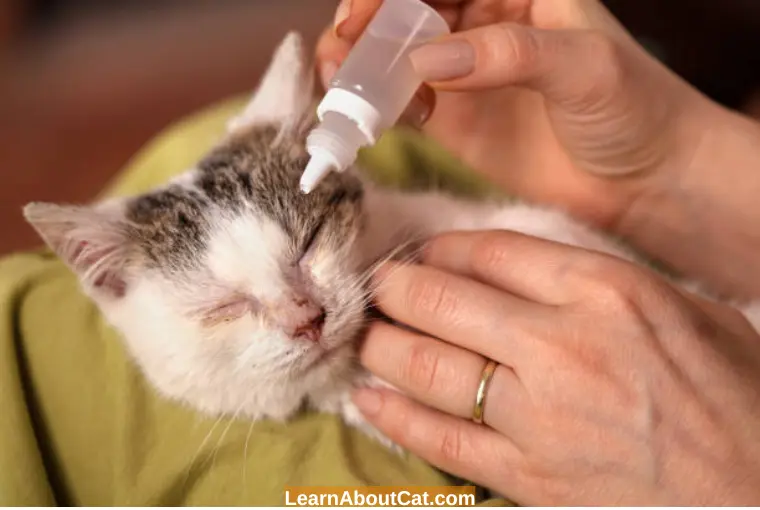
1. Blocked Ducts
If your feline has blocked ducts, you will notice tears spilling from its eyes. Tear ducts drain tears from the eyes to the back of the nose. If they are blocked due to a small obstruction, artificial tears can help dislodge them.
However, in most cases, a vet will have to take a look and perform a procedure to unblock your cat’s tear ducts, most probably under general anaesthesia.
2. Keratoconjunctivitis (Dry Eye Syndrome)
Keratoconjunctivitis, also known as dry eye syndrome, is a condition where your cat’s eye is not producing enough tears necessary to keep it moist. This leads to inadequate removal of foreign bodies and dust from the eye. Some signs are:
- Redness and irritation
- Squinting
- Excessive blinking
- A dull look
- Discharge from the eyes
Artificial tears can be useful here to replenish the lack of moisture in your cat’s eye. Regardless, a visit to the vet is mandatory to find out and treat the underlying cause.
Keratoconjunctivitis can be caused by bacterial or viral infections. It can also be auto-immune. So treating the underlying cause according to the causative factor is necessary, along with artificial tears for symptomatic treatment.
3. Foreign body
Have you noticed one eye of your cat more squinted, closed, or inflamed than the other? The discharge could be coming out of the affected eye, or your cat might be pawing it often.
If this is your case, your furball probably got something stuck in the outer layer of its eye while exploring its surroundings, causing it pain, redness, and discharge. Some possible foreign particles could be dust, debris, seeds, dirt, or pieces of plants.
In this case, artificial tears can help dislodge the foreign object from your cat’s eye, allowing it to heal. However, if you notice the same symptoms after using artificial tears for a few days, you should take your cat to the vet; as the foreign body might have caused an infection that will now need antibiotics.
4. For Cleaning your Cat’s Eyes
Your cat doesn’t need to have an ailment for you to use artificial tears. Sometimes it’s a good idea to clean your cat’s eyes, especially after they wake up, to get rid of the black stuff at the corner of their eyes.
You can use a clean cotton ball and tap water to do so; artificial tears are not necessary for daily cleaning. On noticing the slightest redness, you can use artificial tears to help alleviate any developing eye conditions.
When Should I See A Vet?
When it comes to your feline’s delicate eyes, the matter should never be taken lightly. If you are constantly putting artificial tears in your cat’s eyes and it is not resolving the issue, or if you are uncertain of what is wrong with your cat’s eye, it’s best to seek professional help and visit the vet.
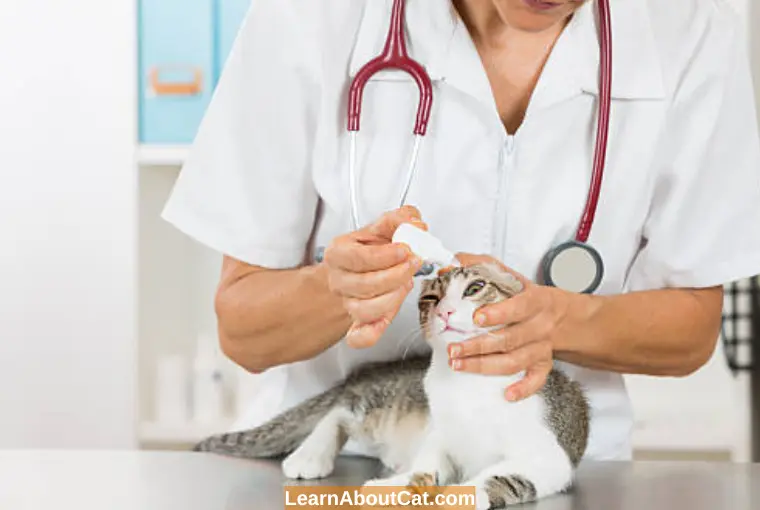
Some signs that may indicate it’s time to consult a veterinarian include:
- Persistent eye discharge or redness
- Cloudy or hazy eyes
- Swollen or irritated eyelids
- Excessive blinking or squinting
- Loss of vision or blindness
It’s essential to seek veterinary care as soon as possible if you notice any of these signs, as they may indicate a more serious underlying condition.
How to Administer Eye Drops to Cats
Administering eye drops to cats can be a challenging task, but with some practice and patience, it can be done smoothly. Here are the steps you need to follow:
- Wash your hands and make sure the eye drops are at room temperature.
- Hold your cat gently and wrap a towel around it to keep it calm.
- Use your thumb and index finger to hold your cat’s head steady.
- Use your other hand to hold the eye drop bottle.
- Tilt your cat’s head slightly back and use your fingers to pull down the lower eyelid.
- Squeeze the eye drop bottle to release the prescribed number of drops into the eye.
- Release your cat and allow it to blink and spread the eye drops throughout the eye.
Tips for Using Eye Drops on Cats
- Use eye drops prescribed by your veterinarian.
- Keep the eye drops at room temperature.
- Follow the dosage instructions carefully.
- Use a towel to restrain your cat if needed.
- Have someone assist you by holding your cat steady while you administer the eye drops.
- Be patient and gentle with your cat. Avoid rushing the process as this may cause more stress for your furry friend.
Tips for Preventing Eye Problems in Cats
Preventing eye problems in cats is essential for their overall health and well-being. Here are some tips to help prevent cat eye problems:
- Keep your cat’s living area clean and free of dust and allergens.
- Feed your cat a healthy and balanced diet to boost its immune system.
- Proper grooming and hygiene
- Keep your cat indoors to prevent exposure to outdoor irritants and infections.
- Schedule regular check-ups with your veterinarian to ensure your cat’s eyes are healthy.
Frequently Asked Questions
Can I Put Visine In My Cat’s Eye?
No, you should not put Visine in your cat’s eye as it has not been tested on animals.
Can I use the saline solution on my cat’s eyes?
Yes, saline solution is safe to use on your cat’s eyes to clean and flush out any debris or irritants. However, it’s important to use a sterile saline solution that is specifically formulated for eye use and avoid using homemade solutions or products with added ingredients.
How can I tell if my cat has an eye infection?
If your cat is experiencing redness, swelling, discharge, squinting, or pawing at their eye, it could be a sign of an eye infection. If you notice any of these symptoms, it’s important to take your cat to the veterinarian for a proper diagnosis and treatment.
Final Verdict
Other than artificial tears, human eye drops should not be used for feline eye conditions. Artificial tears can help alleviate the discomfort of some eye conditions, but for definitive treatment, a vet needs to be consulted.
Cat-specific eye drops are a safer and more effective solution to alleviate eye problems in cats. Remember to seek veterinary care if you notice any persistent eye problems in your cat.
Who is Isabella?
My name is Isabella, and I am a dedicated and knowledgeable cat enthusiast. With years of experience caring for cats and a deep love for felines, I made a mission to help other cat lovers navigate the challenges of cat ownership.

